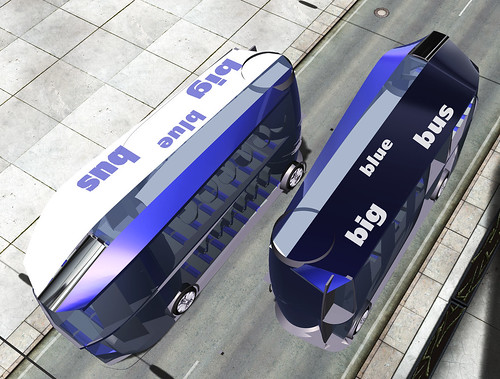Friday's presentation of the project at Alt Car was an amazing experience. It was an overwhelming opportunity to meet the judges, members of the public who have been following and contributing to the blog, and to present and discuss the ideas about the Bus of the Future. Thank you to all who attended and have contributed to the project.
9.29.2008
Icon Bus Main_render
I set out to design a bus that transforms the currently pleasant and convenient ridership experience into a desirable daily occasion. Big Blue Bus’s renowned dedication to community, cleanliness, and friendly convenience serves as the primary inspiration for my designs.
I wanted to effectively make riding the bus akin to spending a day at the beach. I go to Santa Monica to enjoy the ocean, clear my head of stress and reinvigorate my spirits. I thought these motives would be a great starting point to shape my design. Digging a bit further, I though of the whole ‘Seeing and Being Seen” aspect of the beach experience. Whether it’s enjoying the sea with friends and loved ones, or strolling down the Third St. Promenade amongst complete strangers, being a part of the scene is fun and desirable. I wanted to create an iconic design that people wanted to be seen in, to ride in and experience.
Icon Bus side_rendering
PEV- POSITIVE EMISSIONS VEHICLE
Exterior TiOx gills break down atmospheric ozone into oxygen, therefore cleaning surrounding air
Shell made from composites derived from CO2 sequestered from the atmosphere
Hub-mounted electric motors powered by Lithium ion batteries, Ultracapacitors quick-charged at each bus stop, and small IC generator for long-distance/ emergency jaunts
Roof-mounted solar cells provide energy for the lighting and climate control systems
ECO-FRIENDLY CLIMATE CONTROL SYSTEM
Inspired by the Kansai Airport HVAC system, Tensile air ducts circulate filtered air around the cabins, efficiently maintaining a pleasant climate
Revolving doors reduce energy required to keep cabin at a constant temperature by minimizing amount cooled air escape at each stop
Roof-mounted chameleon panels change from white to black, depending on whether heat energy needs to be absorbed or reflected to regulate interior temperature
9.15.2008
Cougar - Final Renderings
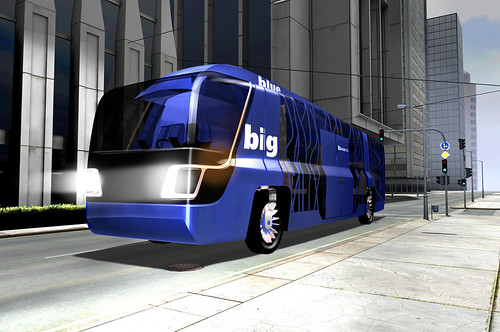
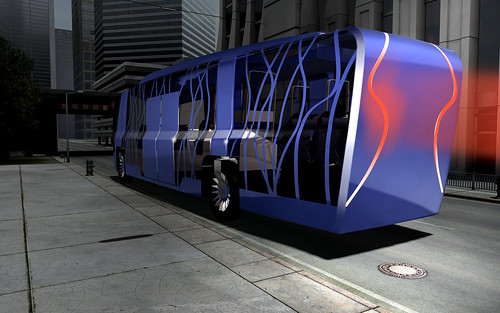
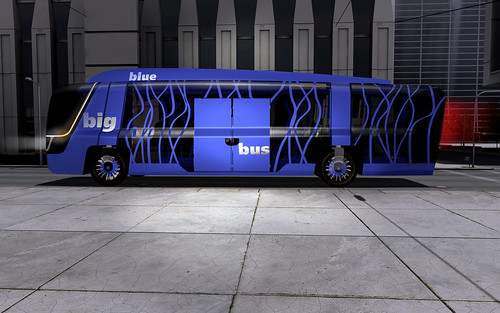
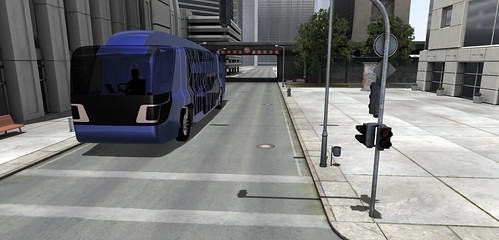
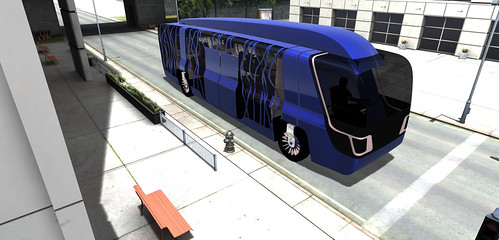
The list below shows the many attributes that ultimately shaped the design of this bus of the future.
Ridership
- Multiple possibilities for configuring different, unique environments.
- More space for peak time ridership
- More comfort and uniqueness for off peak ridership
- Possibility of creating mobile public expression spaces
Innovation
- Special stand up space saver seating
- Ability to separate passenger cells from motive chassis
- Driver passenger interface which allows access to driver and route info
- RFID prepayment system allows for faster loading of passengers (not unique to this design but part of its motivation)
- In wheel electric motors
- Total drive by wire
Sustainability
- Efficient use of energy
- More effective management of available resources
- Less expense incurred in turnover from old passenger cells to new
- Faster maintenance time due to easier access to mechanical components
Brand
- Worldwide first attempt to separate bus structure into two components.
- Iconic shape of bus chassis and cells will result in memorable affection on the part of ridership and consequent recognition as an ICON.
9.12.2008
Functionality - Cougar's Passenger Cell Transfer

Step 1: The bus must be at a complete stop before the passenger cell exchange begins.
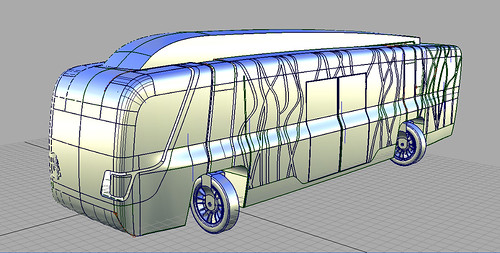
Step 2: The wheels of the bus turn 90 degrees. The “legs” of the chassis move outward until they are no longer touching the bus.
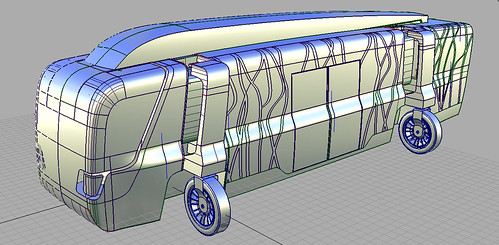
Step 3: The “legs” of the chassis extend vertically lifting the chassis above the passenger cell. The wheels rotate back into the original position for forward motion.

Step 5: The chassis drives forward and leaves the current passenger cell behind. Now the rest of the bus can be serviced more efficiently. Later, a new passenger cell of any length can be reinserted into the chassis.
